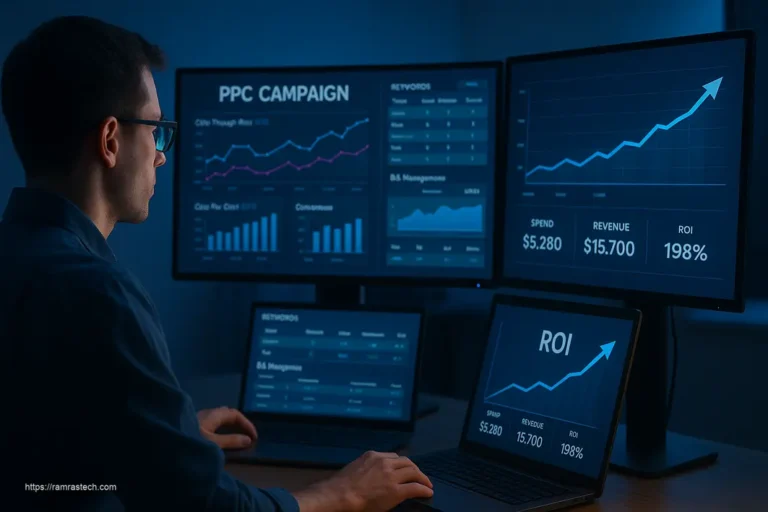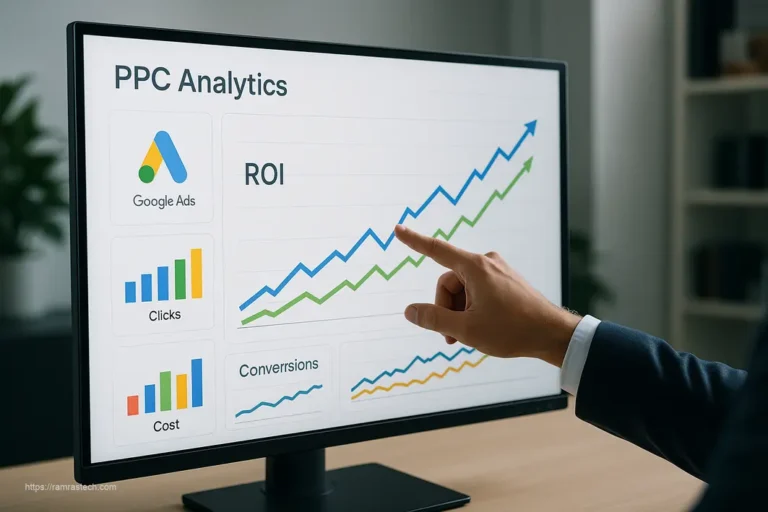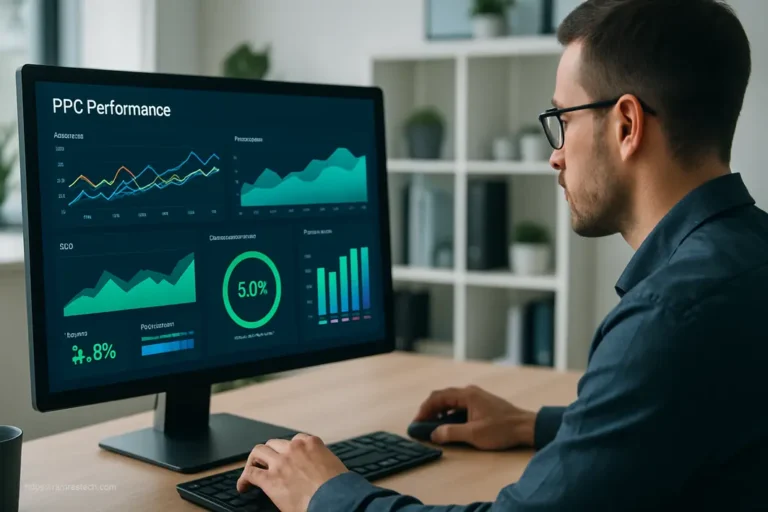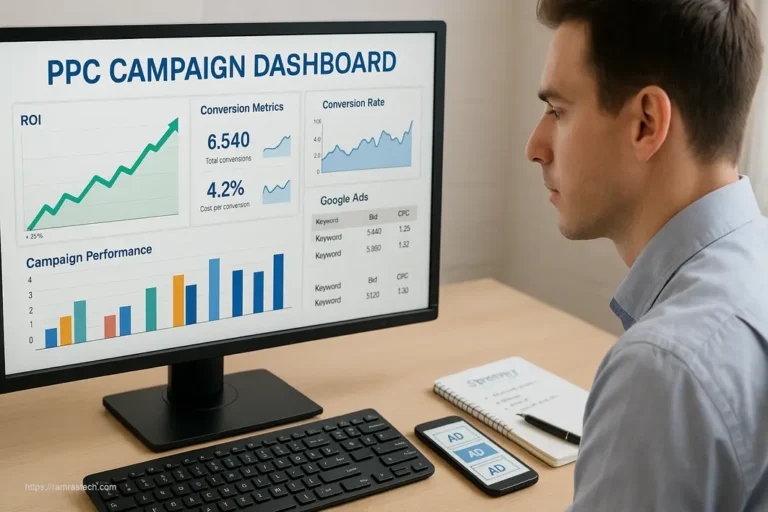Maximize Your Revenue with These 5 Essential PPC Tactics!
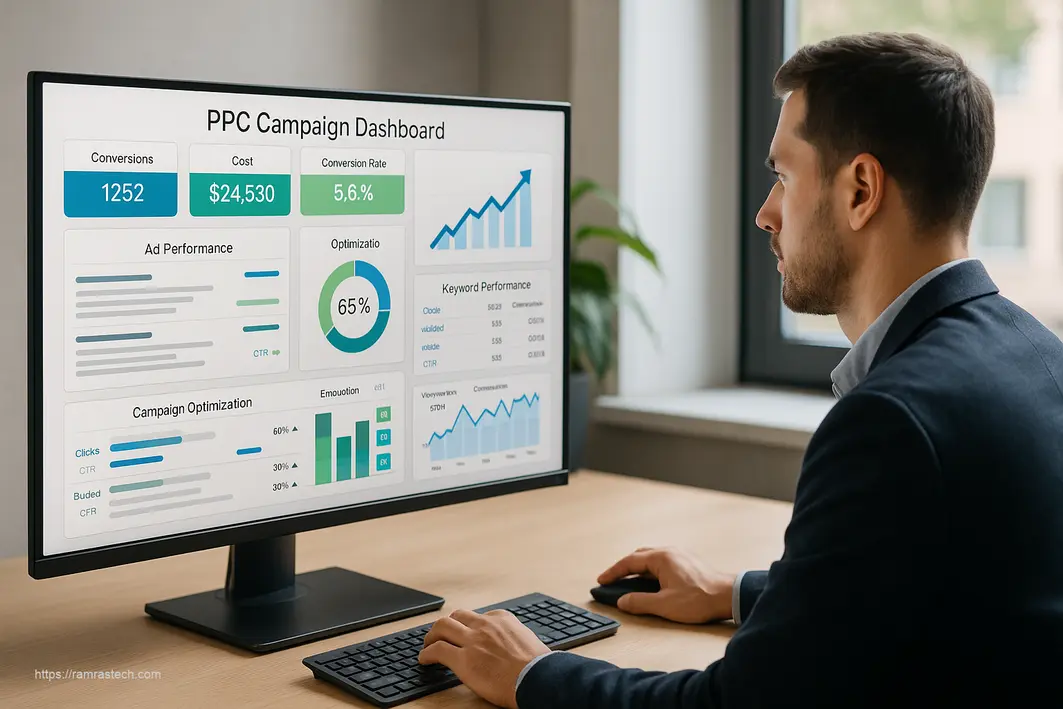
Pay-per-click advertising isn’t just another marketing channel—it’s often the difference between businesses that scale quickly and those that struggle to gain traction. If you’ve been pouring money into PPC campaigns without seeing the needle move, you’re not alone. The truth? Most businesses are leaving money on the table by overlooking crucial PPC tactics that could transform their results overnight.
With digital ad spend projected to hit $645 billion by 2024, competition for attention is fierce. Your competitors are constantly refining their approach, and standing still means falling behind. Let’s dive into the PPC tactics that actually move the needle in today’s competitive landscape.
What Are PPC Tactics and Why Do They Matter?
PPC tactics are the specific, actionable techniques used within your broader pay-per-click strategy to optimize campaign performance and maximize return on investment. While your PPC strategy might outline goals like “increase e-commerce sales by 20%” or “generate 50 qualified leads monthly,” your tactics are the nuts and bolts of how you’ll actually achieve those objectives.
Think of it this way: if strategy is deciding where to go, tactics are figuring out exactly how to get there.
| PPC Strategy | PPC Tactics |
|——————|——————|
| Set quarterly revenue goals | Implement negative keywords |
| Determine target audience | A/B test ad headlines |
| Allocate monthly budget | Adjust bid modifiers by device |
| Choose advertising platforms | Create custom audience segments |
Without solid tactics, even the best strategy falls flat. I’ve seen businesses with six-figure monthly ad budgets waste thousands simply because they hadn’t implemented basic tactical optimizations like proper tracking or audience segmentation.
8 Essential PPC Tactics That Drive Revenue Growth
1. Strategic Keyword Research and Selection
Effective PPC campaigns begin with identifying the right keywords—the foundation upon which everything else is built. This isn’t just about finding popular search terms; it’s about understanding user intent and selecting keywords that align with your business objectives.
The most successful PPC practitioners follow a systematic approach:
- Start with commercial intent: Focus on keywords that signal purchase readiness (“buy,” “price,” “best”) rather than informational queries
- Analyze competitor keywords: Tools like SEMrush or Ahrefs reveal what’s working for others in your space
- Consider keyword match types: Strategically use broad match modified, phrase match, and exact match to control when your ads appear
- Prioritize long-tail keywords: These specific multi-word phrases typically have lower competition and higher conversion rates
One e-commerce client we worked with was bidding on general industry terms with high search volume. By shifting 60% of their budget to long-tail keywords with clear purchase intent, we reduced their cost-per-acquisition by 42% while maintaining the same conversion volume.
2. Compelling Ad Copy That Converts
Even with perfect keyword targeting, your campaigns will underperform without persuasive ad copy. Your ads need to capture attention, communicate value, and drive action—all within severe character limitations.
Here’s what separates high-performing PPC ads from the rest:
- Include the primary keyword: This improves relevance and quality score
- Highlight unique selling propositions: What makes your offering better than competitors?
- Create urgency: Limited-time offers or scarcity elements drive immediate action
- Use numbers and specifics: “50% Off” performs better than “Big Savings”
- Test multiple headlines: Google Ads now allows up to 15 headlines and 4 descriptions
Pro tip: Work backward from your landing page when writing ad copy. Ensure your ad promises align perfectly with what users will find after clicking, creating a seamless experience that boosts conversion rates.
3. Advanced Audience Targeting and Segmentation
The spray-and-pray approach to PPC rarely works in today’s competitive landscape. Sophisticated audience targeting is what separates campaigns that waste money from those that generate consistent returns.
Implement these targeting tactics to refine who sees your ads:
- Create custom audience segments: Group users by behavior, demographics, and interests
- Utilize remarketing lists: Target previous website visitors with tailored messages
- Implement customer match: Upload existing customer data to target similar audiences
- Leverage in-market audiences: Reach people actively researching products like yours
One financial services company we worked with was targeting broadly by age and income. By creating segmented campaigns for different life stages (new graduates, new parents, pre-retirees) and tailoring messaging accordingly, they saw conversion rates improve by over 35%.
4. Strategic Bid Management
Bid management is where art meets science in PPC. Setting the right bids ensures your ads appear in front of the right people at the right time—without overpaying for clicks.
Effective bid management tactics include:
- Implement device bid adjustments: Increase or decrease bids for mobile, desktop, or tablet based on performance data
- Use dayparting: Adjust bids by time of day and day of week when conversions are most likely
- Set location bid modifiers: Allocate more budget to high-performing geographic areas
- Explore automated bidding: Test Google’s machine learning algorithms like Target CPA or Target ROAS when you have sufficient conversion data
A local service business was previously bidding the same amount around the clock. By implementing dayparting to increase bids by 40% during high-conversion evening hours and reducing bids during low-performing mornings, they improved their overall ROI by 28% within three weeks.
5. Negative Keyword Implementation
Perhaps no PPC tactic offers a better return on effort than proper negative keyword implementation. These are the search terms you explicitly tell platforms NOT to show your ads for, preventing wasted spend on irrelevant clicks.
Here’s how to approach negative keywords strategically:
- Perform regular search query analysis: Review what people are actually searching for when your ads appear
- Create negative keyword lists: Group related terms that can be applied across multiple campaigns
- Use match types for negatives: Broad, phrase, and exact negative matches offer different levels of control
- Consider intent-based negatives: Terms like “free,” “DIY,” or “how to” often indicate non-commercial intent
One retail client was advertising luxury watches but neglecting negative keywords. After discovering they were paying for clicks on terms like “fake watches” and “watch repair,” we implemented a comprehensive negative keyword strategy that reduced wasted spend by over $2,000 monthly while improving conversion rates.
6. Landing Page Optimization
Perfect keyword targeting and compelling ads mean nothing if your landing page experience falls short. The post-click experience is where conversions actually happen, making landing page optimization a critical PPC tactic.
Following landing page best practices will dramatically improve your conversion rates:
- Maintain message match: Your landing page should echo the exact language and offers from your ads
- Simplify the conversion path: Remove navigation menus and distractions
- Optimize page speed: Every second of load time reduces conversions by approximately 7%
- A/B test key elements: Headlines, images, form length, and call-to-action buttons all impact conversion rates
- Ensure mobile optimization: Many PPC clicks come from mobile devices
A B2B software company was sending all PPC traffic to their homepage. By creating dedicated landing pages for each major service line with simplified messaging and forms, they improved conversion rates by 89% compared to their general homepage.
7. Extension Utilization for Enhanced Visibility
Ad extensions are one of the most underutilized PPC tactics despite being free to implement and almost always improving campaign performance. These additional pieces of information expand your ad’s real estate and provide users with more reasons to click.
Maximize your ad’s impact with these extension tactics:
- Implement sitelink extensions: Direct users to specific pages beyond your main landing page
- Add callout extensions: Highlight benefits like “Free Shipping” or “24/7 Customer Service”
- Use structured snippets: Showcase specific products, services, or categories
- Include call extensions: Make it easy for mobile users to contact you directly
- Add price extensions: Display pricing information directly in your ads
For more detailed information on leveraging ad extensions, check out our guide on understanding Google Adwords ad extensions.
8. Conversion Tracking and Continuous Optimization
Without proper conversion tracking, you’re essentially flying blind with your PPC campaigns. Implementing robust tracking allows you to see which keywords, ads, and audiences are driving actual business results—not just clicks.
Implement these tracking and optimization tactics:
- Track multiple conversion points: Primary goals (purchases, lead forms) and micro-conversions (newsletter signups, PDF downloads)
- Implement value-based tracking: Assign different values to different conversion types
- Use Google Analytics integration: Connect your PPC data with website behavior metrics
- Schedule regular optimization sessions: Weekly reviews for high-spend accounts, bi-weekly for smaller budgets
- Develop a testing roadmap: Systematically test one element at a time
If you’re looking to improve your tracking and optimization approach, our article on maximizing ROI with PPC advertising provides a comprehensive framework.
Mastering PPC Management for Sustainable Results
Effective PPC management is about bringing all these tactics together into a cohesive, ongoing process. It’s not a one-time setup but a continuous cycle of implementation, analysis, and refinement.
Here’s a practical framework for PPC management excellence:
1. Establish Clear KPIs and Attribution Models
Before optimizing anything, you need to know what success looks like. Define specific, measurable KPIs beyond just conversions:
- Cost per acquisition (CPA)
- Return on ad spend (ROAS)
- Conversion rate by campaign/ad group
- Click-through rate (CTR)
- Quality Score improvements
Just as important is determining how you’ll attribute conversions across multiple touchpoints. Will you use last-click attribution, first-click, linear, or a custom model? This decision significantly impacts which tactics appear most effective.
2. Implement a Structured Testing Process
Systematic testing separates professional PPC managers from amateurs. Create a documented testing schedule that includes:
- What element you’re testing (headlines, audiences, bid strategies)
- Your hypothesis for the test
- Required sample size for statistical significance
- Timeline for evaluation
- Documentation of results
Avoid the common mistake of making multiple changes simultaneously, which makes it impossible to determine what actually drove performance changes.
3. Develop Channel-Specific Tactical Approaches
While we’ve covered many universal PPC tactics, each platform has unique features that require platform-specific approaches:
Google Ads Tactics:
- Leverage Performance Max campaigns for retail
- Implement Smart Bidding with specific ROAS targets
- Utilize audience signals to guide automated campaigns
Facebook/Instagram Ads Tactics:
- Create custom audiences based on engagement time
- Implement conversion API alongside pixel tracking
- Test automatic placements versus manual placement selection
LinkedIn Ads Tactics:
- Leverage job title and company size targeting
- Test Lead Gen Forms against website conversions
- Implement account-based marketing approaches
For businesses operating across multiple channels, our guide to affordable digital marketing offers strategies for efficient budget allocation.
4. Balance Automation and Manual Control
Modern PPC platforms increasingly push automation, from bidding to creative selection. Smart PPC managers know when to embrace automation and when to maintain manual control:
Where automation often works well:
- Bid management at scale
- Budget allocation across campaigns
- Dynamic search ads for comprehensive keyword coverage
Where manual approaches often outperform:
- Ad copywriting and testing
- Negative keyword implementation
- Campaign structure and organization
The key is finding the right balance for your specific situation rather than defaulting to either extreme.
Advanced PPC Tactics for 2025 and Beyond
As digital advertising evolves, staying ahead of emerging PPC tactics becomes crucial for maintaining competitive advantage:
First-Party Data Activation
With the deprecation of third-party cookies and increasing privacy regulations, leveraging your own customer data becomes essential. Advanced tactics include:
- Creating lookalike audiences based on high-value customer segments
- Implementing customer data platforms (CDPs) to unify data across touchpoints
- Developing propensity models to predict which prospects are most likely to convert
AI-Powered Creative Optimization
Machine learning now enables unprecedented creative testing and optimization:
- Implement responsive search ads with multiple headline and description variations
- Test AI-generated ad copy variations against human-written versions
- Use computer vision analysis to identify which visual elements drive engagement
Cross-Channel Attribution and Budget Allocation
Modern PPC doesn’t exist in a vacuum—it’s one part of a broader marketing ecosystem:
- Implement multi-touch attribution models that account for influenced conversions
- Develop algorithmic budget allocation models that shift spend to high-performing channels in real-time
- Create holistic measurement frameworks that account for both paid and organic touchpoints
Common PPC Tactics Mistakes to Avoid
Even experienced marketers make these tactical errors that undermine campaign performance:
1. Neglecting the Full Conversion Funnel
Many advertisers focus exclusively on bottom-funnel keywords with high purchase intent, missing valuable opportunities to nurture prospects earlier in their journey. A balanced approach includes:
- Awareness campaigns targeting relevant audience interests
- Consideration-phase content promoting guides, comparisons, and reviews
- Conversion campaigns focused on purchase-ready prospects
2. Failing to Align PPC Tactics with Business Cycles
Business seasonality, inventory status, and sales capacity should all influence your tactical approach:
- Adjust bidding and budgets around seasonal peaks and valleys
- Reduce campaign aggressiveness when fulfillment capacity is constrained
- Coordinate PPC pushes with other marketing initiatives for amplification
3. Overlooking Competitor Activity
PPC doesn’t happen in isolation—competitor actions directly impact your results:
- Monitor competitor ads and landing pages for positioning changes
- Track auction insights reports to identify new entrants or aggressive moves
- Adjust tactics when competitors significantly increase or decrease their presence
FAQ: PPC Tactics and Implementation
What’s the difference between PPC tactics and PPC strategy?
PPC strategy refers to your overarching approach—your goals, target audience, budget allocation, and platform selection. PPC tactics are the specific techniques and actions you implement to execute that strategy, such as keyword selection, ad copy testing, and bid adjustments. Strategy answers “what and why,” while tactics address “how and when.”
How often should I review and adjust my PPC tactics?
For high-spend accounts ($10,000+ monthly), conduct weekly tactical reviews focusing on underperforming elements. For smaller accounts, bi-weekly or monthly reviews are typically sufficient. However, major changes to tactics should be given enough time to gather statistically significant data—usually at least 2-3 weeks for most changes.
Which PPC tactics offer the quickest ROI improvements?
Implementing negative keywords, improving ad relevance through better keyword-to-ad alignment, and adjusting bids based on device performance typically yield the fastest ROI improvements. These can often be implemented in hours and show measurable results within days, unlike more complex tactical changes that may take weeks to demonstrate clear impact.
How do I know which PPC tactics are working for my specific business?
The only reliable answer is through proper tracking and testing. Implement conversion tracking across your entire funnel, establish clear attribution models, and systematically test different tactical approaches. What works for other businesses—even direct competitors—may not work as well for you due to differences in brand positioning, margins, or operational realities.
Should I manage PPC tactics in-house or hire an agency?
This depends on several factors including your team’s expertise, available time, and budget scale. In-house management works well when you have dedicated specialists and moderate campaign complexity. Agency management often makes sense for high-spend accounts requiring advanced tactics across multiple platforms, or when internal resources are limited. Many businesses find a hybrid approach works best: handling day-to-day tactical adjustments in-house while partnering with specialists for strategy and advanced optimization.
For more insights on building internal marketing capabilities, see our guide on affordable marketing automation for SMEs.
Conclusion: Creating Your PPC Tactics Roadmap
Implementing effective PPC tactics isn’t about chasing the latest trend or blindly copying competitors. It’s about systematically building a foundation of best practices, then continuously refining based on your specific business goals and performance data.
Start by auditing your current approach against the tactics outlined in this guide. Identify the most significant gaps or opportunities, then create a prioritized implementation plan based on potential impact and difficulty.
Remember that even small tactical improvements compound over time. A 10% improvement in click-through rate combined with a 10% improvement in conversion rate yields a 21% overall improvement—often the difference between campaigns that lose money and those that drive profitable growth.
The most successful PPC practitioners aren’t those with secret techniques or insider knowledge—they’re the ones who consistently implement proven tactics, measure results methodically, and never stop optimizing.
Ready to transform your PPC results? Start by implementing just three tactical improvements this week, measure the impact, and build from there. Your future self (and your CFO) will thank you.
What PPC tactics have driven the biggest improvements for your business? Share your experiences in the comments below.
Need expert help implementing these PPC tactics? Our team specializes in transforming underperforming campaigns into revenue-generating machines. Schedule a free strategy call to discover how we can help you achieve your digital marketing goals.
